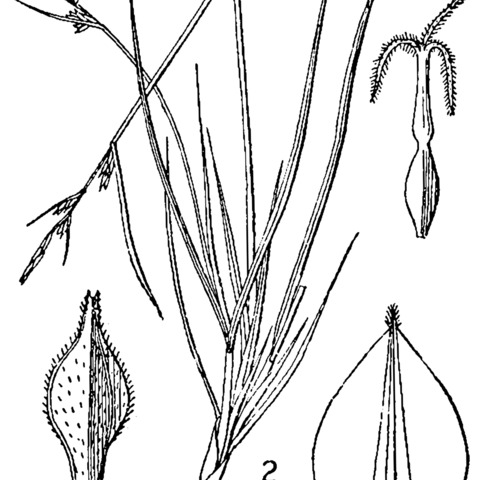Loosely cespitose, reputedly sometimes rhizomatous; stems very slender, 1–4 dm, shorter than the lvs; main lvs 1–2 mm wide; terminal spike staminate, slender, 4–16 mm; pistillate spikes usually 2 or 3, 3–6 mm, 1–3 cm apart, the 2 lowest not overlapping, the lowest one distinctly peduncled; lowest bract foliaceous, often equaling or surpassing the infl; pistillate scales stramineous or reddish-brown, with hyaline margins, acute or short-cuspidate, usually wider but somewhat shorter than the 2–10 perigynia, these light green to brownish-stramineous, minutely pubescent, 2.2–2.7 mm, the body slightly flattened, obovoid above a stipe-like base, 2-keeled, abruptly prolonged into a beak a fourth to two-fifths as long as the body; achene rounded-trigonous. Moist woods; Nf. to s. Ont. and reputedly Wis., s. in the mts. to Conn. and Pa.

